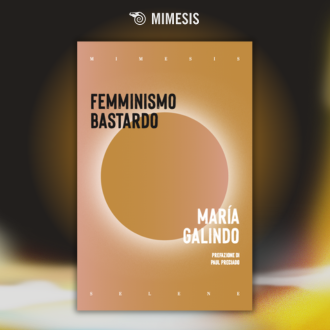
_______________________
Ben venga la svolta green impressa dalla risoluzione approvata dal Parlamento Europeo, in accordo con la Commissione. Ma prestiamo attenzione alle parole per evitarci nuove cocenti delusioni alle prossime conferenze sul clima. Formule come “Neutralità climatica” o “Emissioni nette zero nel 2050” non dicono nulla sul come raggiungere questo ambizioso obiettivo, lasciano aperte strategie opposte e contengono un messaggio subdolo: non serve diminuire la produzione di gas climalteranti poiché troveremo un modo di neutralizzarli e bilanciarli.
Quella parolina – “nette” – sottintende una scommessa al buio: riuscire a compensare le emissioni attraverso sistemi di “assorbimento”. Ma quali? Il modo più semplice ed efficiente (l’approccio Nature Based, aumentando di molto la fotosintesi) sarebbe senz’altro una gestione agroforestale mirata a massimizzare l’assorbimento del carbonio al suolo. Ma – oltre a impedire gli incendi e le deforestazioni in atto – sarebbe necessario fermare l’espansione dell’industria della carne (60 milioni di bovini al pascolo solo nella regione amazzonica), delle monoculture Ogm, dei biocarburanti. Non mi pare però che gli Stati stiano dimostrando la volontà di contenere le attività delle compagnie multinazionali del calibro di Cargill (fornitore di McDonald’s), JBS (Walmart), Bunge (Nestlè). Oltre a ciò, per riuscire ad assorbire i 2/3 (forse) del gas serra servirebbe riforestare una superficie grande come gli Stati Uniti (vedi Le foreste ci salveranno).
LEGGI ANCHE Lezione di greenwashing di Teachers for future Italia
S’avanzano allora strane chimere uscite dai laboratori di geo-ingegneria. Si chiamano Carbon Capture and Storage. Tubi aerostatici, ventole, compressori, pozzi profondi capaci non solo di catturare, distillare e stoccare il biossido di carbonio, ma persino di riutilizzarlo. Nuove tecnologie che vengono presentate come “la frontiera dell’innovazione scientifica e della creatività imprenditoriale (…) Anidride carbonica catturata dall’atmosfera che può diventare combustibile pulito, fibre sintetiche per prodotti di consumo, materiali da costruzione futuristici (…) una grande opportunità per promuovere un’economia circolare” (trascriviamo qui parti del testo dell’articolo a firma Sara Moraca, Il grande affare della CO2, pubblicato sul CorriereInnovazione il 29/03/2019).
Racconta nel suo ultimo libro Naomi Klein (Il mondo in fiamme. Contro il capitalismo per salvare il pianeta, Feltrinelli, 2019) che una società finanziata da Bill Gate, la Stratoshield, vorrebbe sperimentare l’immissione nella stratosfera di aerosol di anidride solforosa in modo da creare una barriera che diminuisca l’insolazione sulla superficie della Terra. Un altro signore ha sparpagliato in mare limatura di ferro per aumentare la fioritura algale.
Più prudentemente le strategie di decarbonizzazione della Germania si affidano a progetti faraonici di impianti solari a concentrazione ad alto voltaggio (Desertec, TuNur, Noor Complex Solar Power Plant) da piazzare nel deserto del Sahara (in Tunisia, Marocco ed Egitto, in attesa che la Libia si stabilizzi) e a imponenti elettrodotti sottomarini che attraverserebbero il Mediterraneo. I progetti sono sponsorizzati dalla Trans-Mediterranean Renewable Energy Cooperation (TREC), un’associazione volontaria supportata dal Consiglio tedesco sui cambiamenti climatici, dal Club di Roma, da Greenpeace, dal principe di Giordania Hassan Bin Al Talal, oltre che dai partiti social-democratico e verde. Il continuo aumento dei consumi energetici rende insufficiente (nelle aree geografiche più “sviluppate” e a parità di consumi) persino la dotazione della fonte energetica primaria: il sole. Dopo aver estratto dall’Africa caffè, petrolio, minerali e schiavi, il colonialismo si ripresenta vestito di verde.
Il saccheggio procede anche con le “terre rare”. Un’approfondita inchiesta del giornalista Guillaume Pitron ci rivela su cosa si reggono le green e smart tech: una dozzina di elementi chimici che per le loro proprietà magnetiche, conduttive, ottiche, catalitiche… sono indispensabili a produrre microcircuiti, rotori per pale eoliche, accumulatori, radar, missili e quant’altro serve alla Quarta rivoluzione industriale. Sono il petrolio del XXI secolo. Vengono estratti in quantità e a un ritmo esponenziali. Peccato, appunto, che questi metalli siano rari e immischiati nelle rocce in modo tale che per estrarne una punta di spillo serva frantumare una collina. E non è un modo di dire: servono 200 tonnellate di materiale per ricavare un chilo di lutezio; 50 tonnelate per un chilogrammo di gallio; 16 tonnellate per un chilogrammo di cerio; 8 tonnelate per un chilo di vanadio. A cui vanno aggiunti fiumi di acqua mischiata con solventi chimici necessari per “purificare” i metalli. Pitron giunge alla conclusione che lo sviluppo sostenibile non esiste poiché “nuove risorse vengono a mancare ogni volta che cambiamo modello energetico e tutto ciò non ha fine” (Guillaume Pitron, La guerra dei metalli rari. Il lato oscuro della transizione energetica e digitale, Luiss, 2019).
La delocalizzazione delle industrie sporche fa il paio con i meccanismi di mercato inventati con il Protocollo di Kioto nel lontano 1997 e rilanciati con l’Accordo di Parigi cinque anni fa: le quote di emissione consentite (permessi di inquinamento) sono fissate per ogni Singolo stato e si applicano agli impianti di produzione. Ma sappiamo bene che gran parte delle merci vengono poi comprate e consumate in paesi diversi da quelli in cui vengono prodotte. Non sarebbe più equo attribuire il peso dello zaino ecologico sulle spalle dei beneficiari effettivi? Non contenti, gli europei si sono concessi anche la libertà di commerciare i permessi di inquinamento auto-attribuiti (Emissions Trading System e Clean Development Mechanism) come se fossero un titolo finanziario qualsiasi, intermediato da istituti finanziari e quotato in borsa (nel 2018 un permesso di emissione di una tonnellata di CO2 valeva 23,5 Euro).
Non si sa di chi avere più paura, se dei negazionisti della Coalizione fossile guidata da Tramp e dagli emiri arabi, o dei cervelloni delle imprese biotech che vedono nella emergenza climatica una occasione per “giocare a fare dio” e, molto più prosaicamente, una opportunità per far fare nuovi profitti alle loro compagnie. Al dilemma non si scappa: salvare l’economia o il pianeta. La green economy rivitalizzava il mercato, non l’ambiente (leggi anche Il business climatico di Silvia Ribeiro).
________________
Una versione più ridotta è stata inviata a Il Fatto quotidiano.
_________________










Why governments need to issue just transition sovereign bonds and how they could do it
The role of sovereign bonds to support a key plank of the Paris climate accord
https://www.responsible-investor.com/articles/financing-fast-and-fair-climate-action-why-governments-need-to-issue-just-transition-sovereign-bonds-and-how-they-could-do-it
By Nick Robins
It’s clear that 2020 has to be the year when the global financial system makes the irreversible shift towards alignment with climate security and sustainable development. One of the keys to success will be a significant increase in finance for the just transition – a transition which delivers a resilient and zero-carbon economy that is fair for all.
Political support is growing fast, with 46 countries committing to introduce national plans for a just transition as part of efforts to ratchet up their climate efforts. Investor commitment is mounting too, with 159 institutions with $10.1 trillion in assets now backing a statement of support led by the PRI.
More and more, the just transition is seen as not only the right thing to do, but also as essential to build the public support for transformational change. Without this, climate action could stall, warns the UK’s Committee on Climate Change. The just transition provides vital ‘connective tissue’ between the environmental and social dimensions of change, a focus that fits well with the strategy being designed by Claire Perry O’Neill, incoming president of the COP26 summit in Glasgow. The former UK Minister of State for Energy and Clean Growth has pledged to take an “all of society” approach to building the global coalition for change that’s needed.
“The next frontier for sovereign bonds is to ringfence proceeds for activities that support a just transition.”
These ambitions for a just transition now need to be financed, using all the tools at our disposal across every asset class. Institutional investors can use their investments in corporations across the globe to ensure that just transition measures are put in place through dialogue with workers and their unions as well as local communities. Already shareholder engagement on the just transition is starting to get underway.
Capital will be needed to make sure that the phase-out of high-carbon sectors does not leave affected workers and communities behind, funding reskilling and regional revitalisation. It will require a boost to investments in the growing green economy, ensuring that this also delivers decent working conditions and positive social spill-overs. And it will also mean finally achieving universal access to clean energy in the developing world as well as ending the scandal of fuel poverty in industrialised economies.
Much of this finance for the just transition will need to come from the public sector, not least to deliver priorities that the market is unable to provide in sufficient quantities, such as clean tech R&D, skills and training, building retrofit as well as regional economic development. Of course, funding for these initiatives comes in large part from savers and investors who buy the bonds issued by development banks, cities and regions as well as sovereign bonds issued by national governments, many of which are ramping up issuance linked to climate action.
Sovereign bonds – a pivotal asset class for the just transition.
The global green bond market ended 2019 on a high, with a record US$231bn in issuance. To date, US$56bn in sovereign green bonds have been issued by 13 governments, with France leading the pack with US$20bn outstanding. Another 14 countries have either announced that they plan to issue sovereign green bonds or are exploring the idea. The steps that governments need to take to issue sovereign green bonds are now well-established, including setting out a framework, identifying eligible budget items, arranging independent review, issuing and then reporting.
Chile is the most recent convert, raising USD$1.4bn and €861m in 2019 and winning the lowest yields ever obtained in primary issuances in both currencies at the respective maturity.
The next frontier for sovereign bonds is to ringfence proceeds for activities that support a just transition. This would have a powerful signalling effect across the financial system on the importance of the just transition as sovereign bonds are a ‘universal asset’, held by every financial institution (including central banks). It would show other issuers what could be done to connect the environmental and the social. It could also raise well-priced funding for the just transition at a time of ultra-low rates.
A sovereign just transition bond would bring together the classic climate initiatives backed by green bonds as well as the human dimension of the transition underpinned by the more embryonic field of social bonds.
The International Capital Market Association’s (ICMA) social bond principles already include many of the key areas of the just transition such as education and vocational training, affordable housing, employment generation as well as socio-economic advancement and empowerment.
Joining the dots between the two is the small, but fast-growing category of sustainability bonds, which channel funds to both green and social projects.
In many ways, just transition bonds by sovereigns (and indeed other issuers) would be a high-impact example of a sustainability bond.
Designing a sovereign just transition bond
Using this framework, governments could design a sovereign bond to accelerate the just transition across their economy. The blend of green and social projects would, of course, rest with the government concerned. For projects that support the human dimension of the transition, governments could draw on the ILO’s just transition guidelines to identify projects that would qualify, fleshing out the high-level categories within the social bond principles.
Integrity will be critical to win market support and avoid ‘just transition washing’.
A just transition sovereign bond would not finance any social activity, but only those linked to climate and the wider ecological transition. This could include workplace and community initiatives in areas that have already seen or will experience a decline in high-carbon sectors. In regions dependent on coal, for example, the World Bank has highlighted that substantial public spending is often needed to fund retraining, enhanced social welfare, early retirement and environmental remediation. This requires investment levels often beyond the capacity of affected regions, making flows of capital from the national government via sovereign bonds highly relevant.
Governments wishing to back their commitment to the just transition with a sovereign bond issue can find inspiration from a number of sources, in particular from leading public finance institutions. In France, for example, the framework developed by Caisse des Dépôts for its green, social and sustainability bonds is ready-made for the just transition, stating the shift towards a resilient, low-carbon and respectful of the biodiversity economic model “must be fair between all citizens”.
At a sub-national level, the German state of North Rhine Westphalia has implemented a robust sustainability bond framework, targeting proceeds at a wide range of activities to boost social inclusion and environmental regeneration.
And Spain’s development bank, ICO, has also issued a social bond with strong resonance with the just transition, using proceeds “to finance SME projects in those regions where income per capita is below the national average”, which could include those impacted by the climate transition.
Who could lead the pack?
Turning this potential into reality will require governments willing to innovate and make the connection between their commitment to the just transition and their sovereign fundraising plans. It will also require clearly expressed demand from institutional investors to their sovereign issuers that they want to see just transition bonds.
In Europe, countries that could take a lead include sovereign green bond champion, France as well as Germany and Spain who have committed to issue sovereign green bonds in the future. Both of these countries have put in place comprehensive just transition plans for their coal industry; Spain also co-chairs the ‘Climate Action for Jobs’ initiative along with Peru. In the developing world, possible pioneers include Fiji, Nigeria and Indonesia which have already issued sovereign green bonds, as well as Cote d’Ivoire and Ghana who are exploring the idea. All five countries have made high-level commitments to the just transition.
There’s one more country that could also be a pioneer and that’s the UK. To date, the UK has decided not to issue a sovereign green bond. But a just transition bond would resonate with the new government’s commitment to deliver a net-zero economy and its pledge to ‘level-up’ conditions across the country. Issued in the run-up to COP26, a UK just transition sovereign bond would demonstrate how urgent climate action can bring broad-based benefits, a key confidence-building ingredient for success in Glasgow.